7 Flat-Faced Cats With Smushed Faces
Adobe Stock/Alena Stalmashonak
There's something undeniably charming about cats with big round faces, expressive eyes, and adorable smushed noses. And while flat-faced cats are undeniably cute, they also have unique personalities that are just as endearing.
However, the physical features that make flat-faced cat breeds popular can lead to certain health considerations. Doing your research on a specific breed’s needs before bringing home a kitten can help you find the perfect companion—and equip you to provide the best possible care.
Flat-Faced Cat Breeds
1. Persian
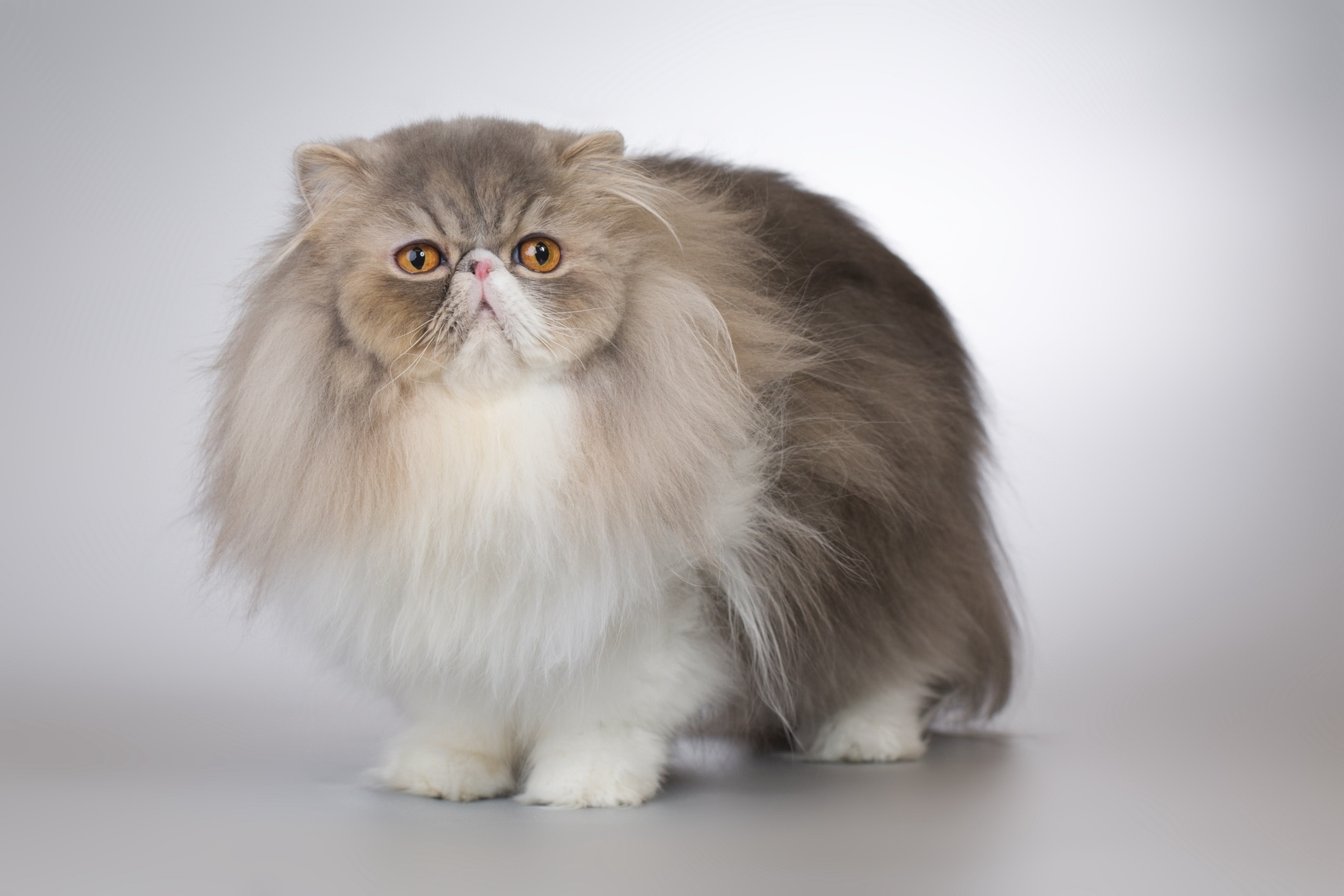
This long-haired, smooshed-faced cat is one of the most popular cat breeds. Beyond the Persian cat’s looks, Stephen Quandt, a certified feline training and behavior specialist (CFTBS), says it’s their even temperament and peaceful nature that makes this breed beloved.
Lounging on laps and in sun rays are a laid-back Persian’s preferred activities—not climbing elaborate cat trees or even playing with toys. “They play gently, almost as an afterthought,” Quandt says. “A couple of feather wands might be all you need.”
While daily combing and brushing are essential to prevent matting, Persians truly enjoy grooming time. They often offer their humans meows and gentle purrs as tokens of their appreciation.
2. British Shorthair
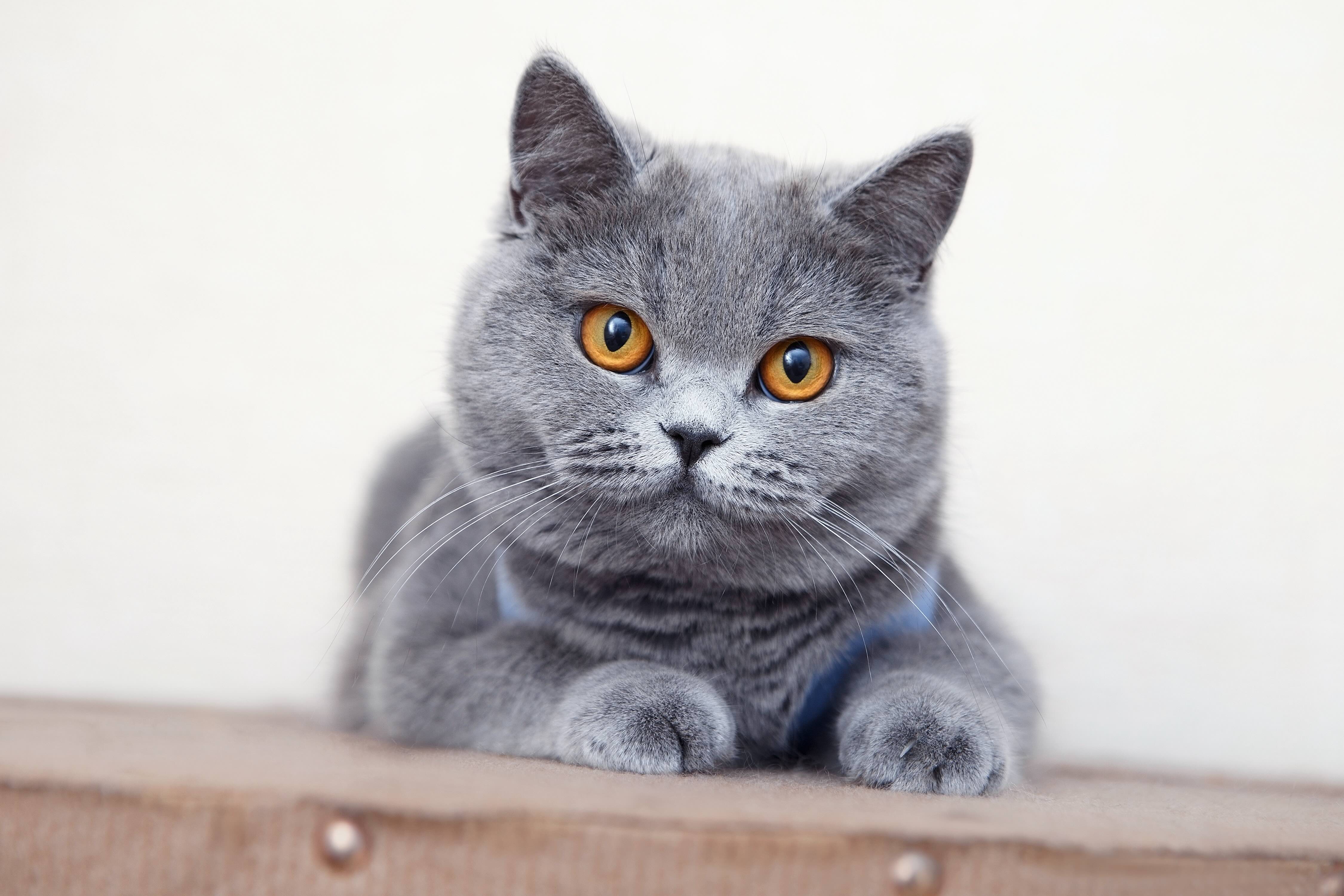
British Shorthair cats have a longer muzzle than some other flat-faced cats like the Persian. Yet, they have an unmistakably round face that, paired with their plush fur, gives them a look not unlike a teddy bear.
These fluffy companions prefer to keep their paws on the ground and aren’t particularly fond of being picked up. While still affectionate, they also have an independent streak and enjoy some time alone, making them ideal companions for busy pet parents.
3. British Longhair
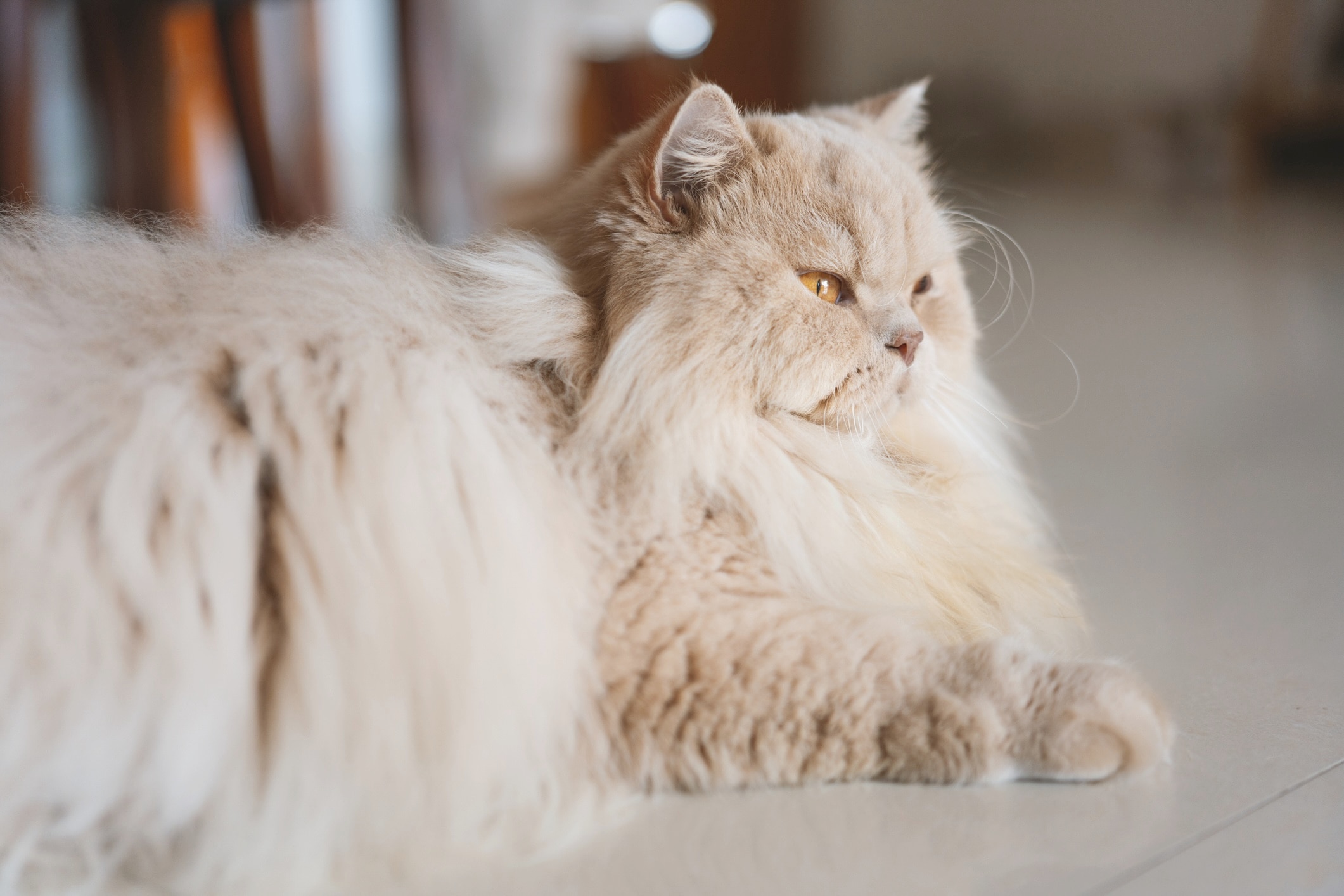
A cross between the British Shorthair and Persian, the British Longhair gets their thick locks from the Persian, rounded face from the British Shorthair, and a lovely temperament from them both.
British Longhair cats are very intelligent and highly food-motivated. This means there can be a big potential for fun training sessions. Their eagerness to learn new tricks can be a fantastic bonding activity and provides mental stimulation.
4. Exotic Shorthair
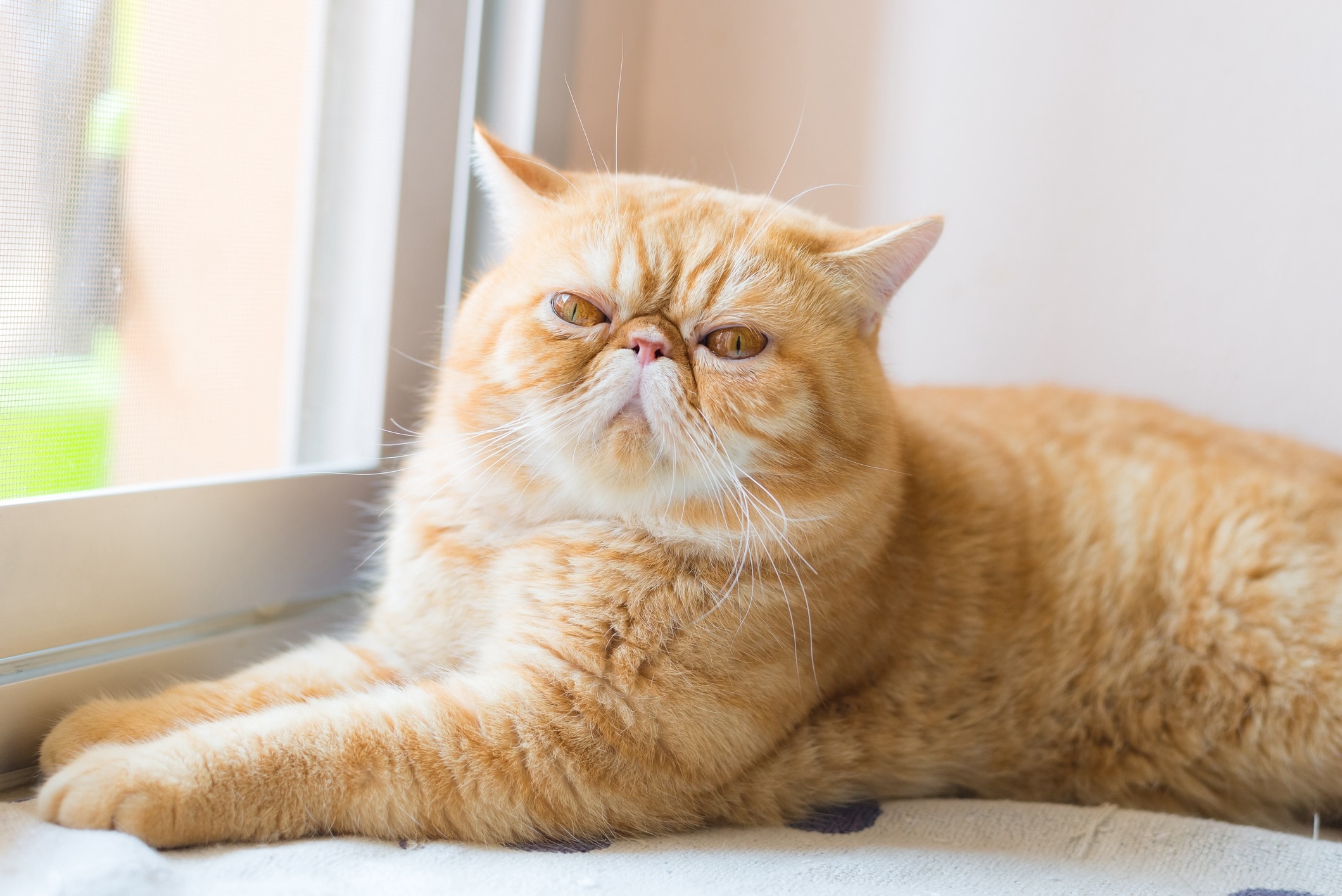
For those who adore Persians’ look but not the extensive grooming that comes with them, the Exotic Shorthair might be the perfect match. Nicknamed the “lazy man’s Persian,” their hair care involves only a weekly brushing, with potentially more frequent sessions during their spring shedding season.
Like their Persian cousins, Exotics are not known for scaling cat trees or seeking out high perches. However, they are generally livelier and more playful. This makes them good companions for active households, including those with children and other pets, provided proper introductions are made.
5. Himalayan

As a blend of the Persian and Siamese breeds, Himalayan cats also share many characteristics with the Persian cat. They get their fluff from their Persian half while their striking color point markings (darker ears, nose, feet, and tail) are inherited from the Siamese. They might appear to be all fluff, but under all that fur is a medium-sized cat typically weighing between 7 and 12 pounds.
Adaptable and friendly to almost anyone who shows them kindness, Himalayans make a wonderful addition to a variety of families—if their daily grooming needs are met.
6. Scottish Fold
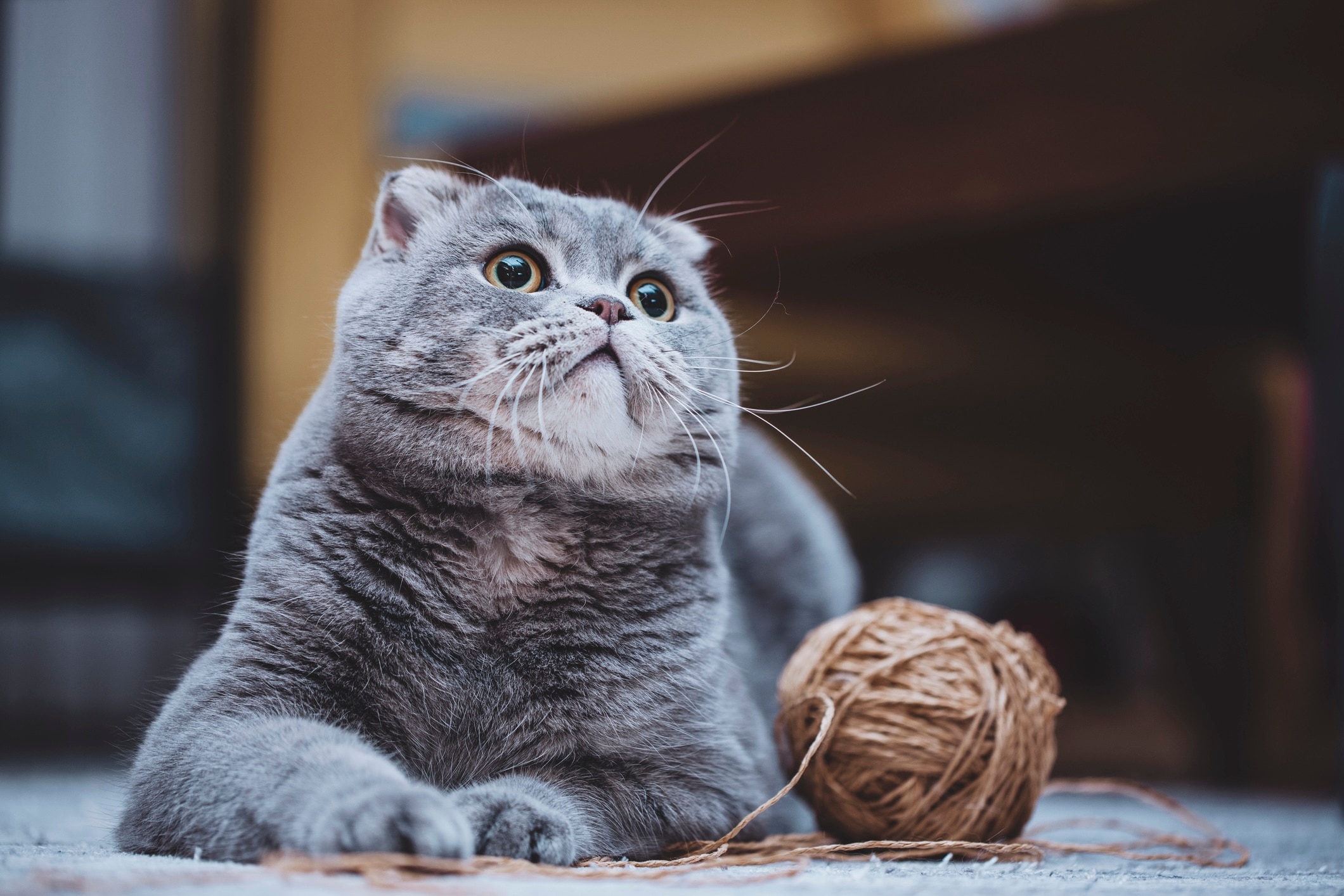
Scottish Folds are incredibly popular due to their rounded facial features, folded ears, and celebrity status—they’re Taylor Swift’s sidekick cat breed. However, ethical concerns shadow this flat-faced cat’s charm.
While “sweet and friendly,” as Quandt says, their folded ears stem from a genetic mutation that causes osteochondrodysplasia (OCD), a painful joint condition.
For those considering welcoming a Scottish Fold home, understanding feline body language is crucial. Signs of discomfort, such as changes in eating or bathroom habits, increased vocalization, disinterest in activities, or even aggression (a very unusual temperament for this breed) shouldn’t be ignored. Call your veterinarian if you notice any changes in your cat’s behavior.
7. Selkirk Rex
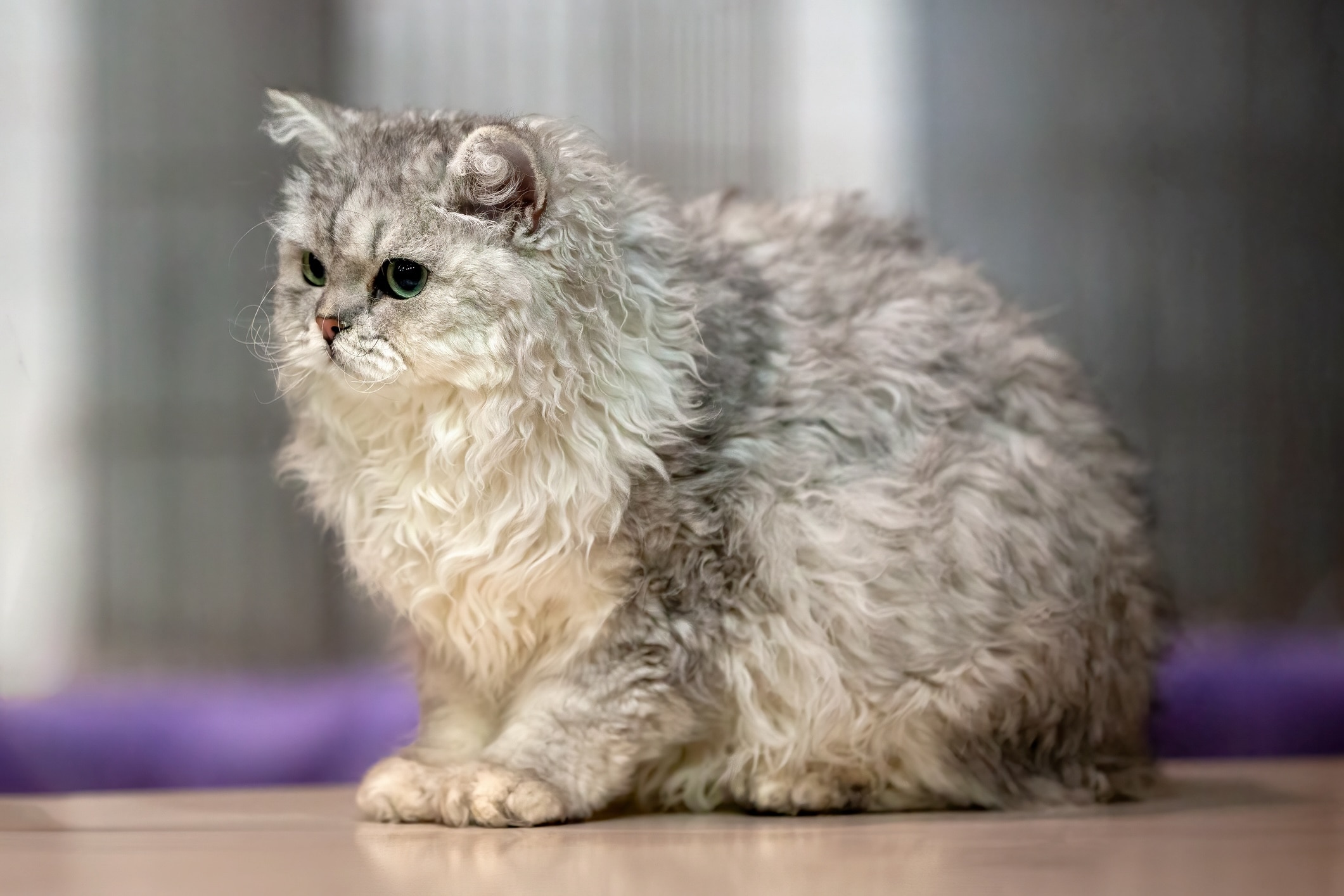
The Selkirk Rex carries a gene for a mane of curly hair that’s dense (thanks to Persian and British Shorthair outcrossing) and ranges from tight ringlets to waves. These cats shed some and require weekly grooming, but too much brushing could cause frizz or breakage.
When it comes to personality, Selkirk Rex cats are generally sweet and people-loving. However, early socialization with new people, sights, and sounds will help them grow into a well-adjusted flat-faced kitty.
Health Considerations for Flat-Faced Cats
While every cat can experience health concerns throughout their life, a flat-faced kitty may have a higher risk of certain health challenges due to their special anatomy. The bones in their skulls tend to be shorter, which causes a rounded head, a short nose, and a lower jaw that’s longer than the upper jaw (underbite).
Brachycephalic Obstructive Airway Syndrome (BOAS)
Brachycephalic obstructive airway syndrome (BOAS) is a term used to describe a group of breathing problems caused by brachycephalic anatomy in cats and dogs.
For cats with flat faces, their unique anatomy makes breathing difficult, either because:
-
The roof of the mouth is too long (elongated soft palate)
-
Their windpipe is narrow (hypoplastic trachea)
-
They have everted laryngeal saccules (small sacks inside the larynx)
-
Their nostrils are too narrow (stenotic nares)
While the snoring and snorting might be cute, BOAS cats can also have other symptoms depending on how severe the airway problems are. Some of the most common symptoms are open-mouthed breathing, noisy breathing, exercise and heat intolerance, coughing, gagging, reverse sneezing, and an increased effort to breathe.
These symptoms can become more severe when a cat is overweight, exposed to hot and humid outdoor temperatures, or stressed. Pet parents must monitor for signs of respiratory distress in flat-faced cats.
Open-mouth breathing should always be taken seriously and requires immediate veterinary attention. In severe cases of BOAS, surgery may be recommended to improve airway issues.
Eye Issues
Cats with flat faces have shallow eye sockets. This causes their eyes to stick out, and their eyelids may not completely cover their eyes. Because of this, they are prone to inflammation and corneal ulcers (scratches on the surface of the eye). They can also have chronic watery eyes, usually accompanied by tear staining. Their squished anatomy can also cause their tear ducts to be misshapen.
Talk to your veterinarian about what products can help keep your cat’s eyes clean and healthy.
If you notice your cat is squinting, has increased discharge (especially if the discharge is yellow or green), is rubbing or pawing at the eye, or has red or cloudy eyes, schedule a vet appointment.
Dental Disease
Dental disease is incredibly common in cats; 50–90% over 4 years old have some form of the disease, according to the Cornell University Feline Health Center.
Cats with flat faces may be at an even higher risk because their anatomy often leads to overcrowded and/or misaligned teeth, which can cause increased plaque and tartar buildup.
Brushing your cat’s teeth daily and scheduling regular veterinary checkups and dental cleanings are the most effective methods of preventing dental issues in flat-faced cats.
